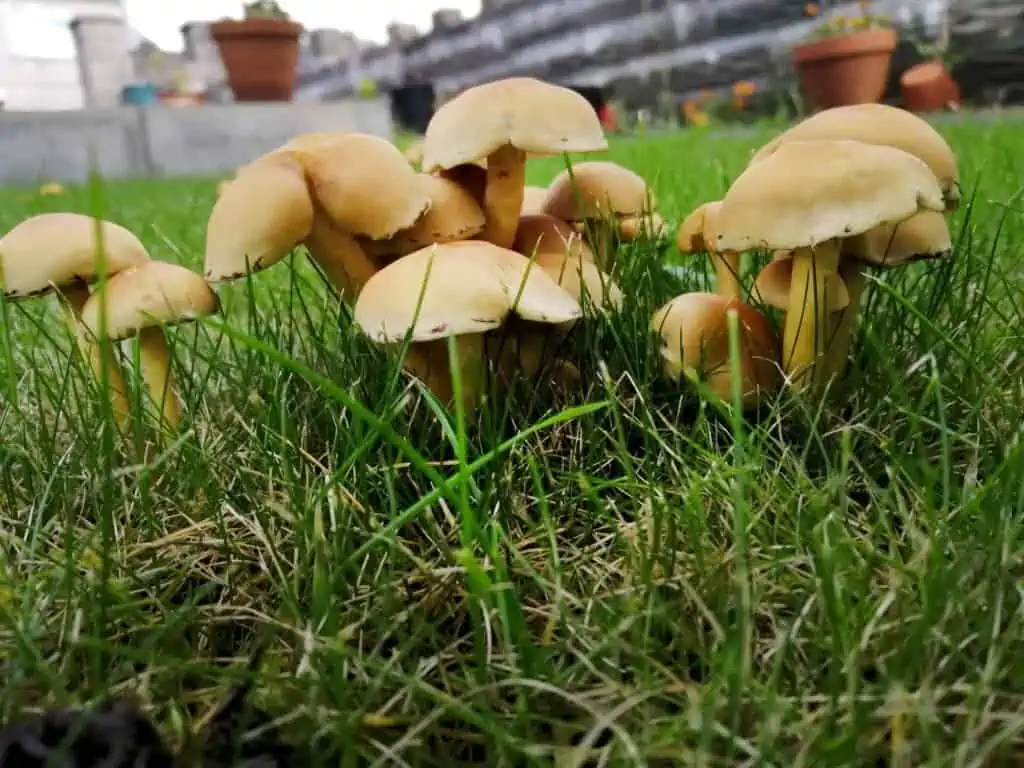Should I Mow Before Applying Fungicide? As a homeowner, it’s not easy to manage several tasks at a stretch without lacking in one or two. Your lawn effectively takes a back seat when you add your job, recreation, business, and other endeavors. That makes it harder to keep your lawn healthy with pristine looks.
One thing you can do is ensure your grass is getting the amount of water and sunshine it needs. Also, there’s the question of mowing your lawn to a proper height. You wouldn’t want your grass growing up to uncontrolled levels.
Fungicide is another option as well. But many homeowners need to learn whether to mow before applying a treatment. You risk lawn fungus taking over your yard without the proper application. This article will help you figure out when mowing is appropriate.
Signs Your Lawn is Dealing with Fungus
Unless you are a novice, you can tell if there’s something wrong with your lawn, particularly when the fungus is involved. Also, you need the help of an expert to understand the best fungicide to apply. Of course, you need to know if fungus exists in the first place.
Your grass lawn is an ecosystem all by itself, so it is normal to find many organisms. Fungi are one of them. However, when there’s a balance, the fungus will be absent.
Several fractures constantly threaten that balance, which enables fungi to grow and eventually overrun your lawn. Here are some of such factors that encourage fungal growth in your grass:
- When you don’t mow your lawn correctly, especially very low cuts
- Too much watering
- Using inappropriate fertilizer
- Planting grass strains susceptible to fungal diseases
- High temperature and humidity
- Drought and environmental conditions
Even with all these fractures, the most common sign of fungi disease is a dead or dying part of your lawn. There may be other reasons for dead and dying parts of your grass you shouldn’t rule out. However, the factors above lead the way.
Further, some typical signs of fungus include:
- Brown, yellow or white patches that seem to increase in diameter over time
- Darkened, slimy, wet, or gray areas
- Different shades of colors on the blades or stems, including black, purple, grey, orange, and red
- Blades appear frayed, lacking color, and distorted.
- When the environmental conditions favor fungal growth and subsequent spread

Should You Mow before applying Fungicide?
Yes and no; there are different ways to treat fungal disease in your lawn. Some people even take out every inch of the lawn for new ones. That only sometimes stops the problems since the soil could be affected. On the flip side, fungicides provide one of the most effective and consistent cures to fungal growth on any lawn.
You will find many fungicide variations on the market, and the best are usually applied two days before mowing your lawn. That is the standard requirement. However, you can also mow your lawn two days after you have applied fungicide. This way, the fungicide is fully absorbed into the yard to observe the results.
While two days before or after mowing is the standard practice, always read the labels of the fungicide products. Some of them carry instructions on how to apply fungicide efficiently.
Fungicides are chemicals produced that can destroy, prevent, and control the growth of fungi on your grass. You can apply them on dust and granules or spray them as a liquid solution. Additionally, you can repeat fungicide applications to achieve better results.
How to Know the Best Fungicide for Your Lawn
Fungicides vary, and most of them are created to work differently. That’s why you need a good idea of the ideal one your lawn needs. Look out for these characteristics:
- Potency is the first thing you want to know about fungicides. Read reviews to learn what other homeowners think about the ones you want. Will they kill fungus?
- Future protection against fungal growth and attacks.
- The specific fungus has no/minimal resistance to the fungicide.
- The fungicide doesn’t harm people or pets that use or play on the lawn.
- The fungicide must have a low impact or threat on the larger environment.

To Mow or Not?
If you decide to mow after applying fungicide, try to leave the clipper grass blades on the lawn. They protect the recently cut grass and help them absorb newly applied nutrients. Besides, the nature of the cut grass complements your fertilizer.
Mowing before applying fungicide is often the preferred option for many homeowners. If you choose that option, do it for at least 24 hours. However, standard procedures dictate two days max is enough.
On a Final Note
Now that you know mowing your lawn before or after applying fungicide are credible option ensure to do either properly. Make sure your mower is ready with clean, sharp blades. Change the oil if necessary and inflate the tires.
Many professionals advocate for mowing before applying fungicide. In most cases, you must use fungicides every two-three weeks without going overboard or risk your lawn developing resistance.






